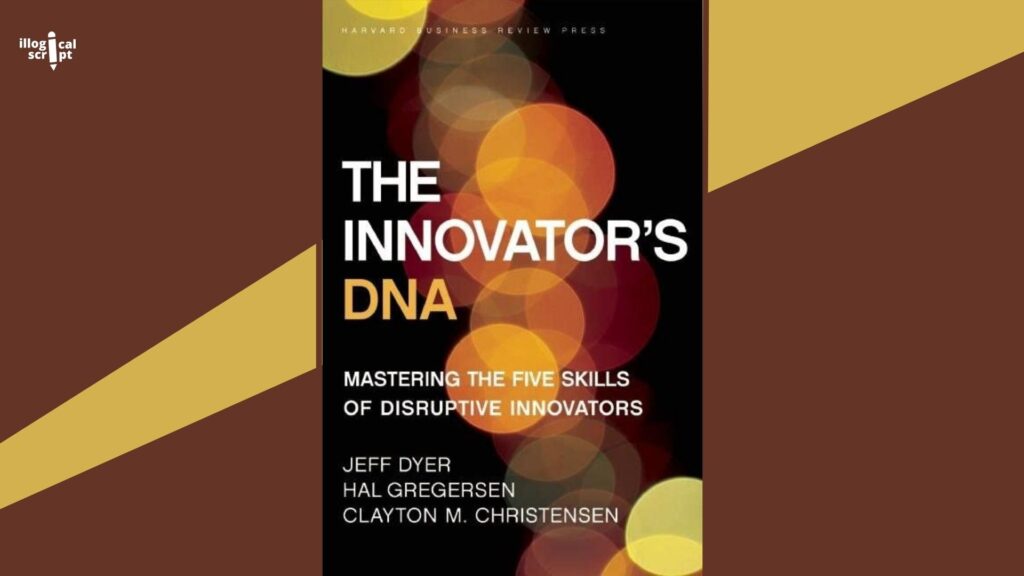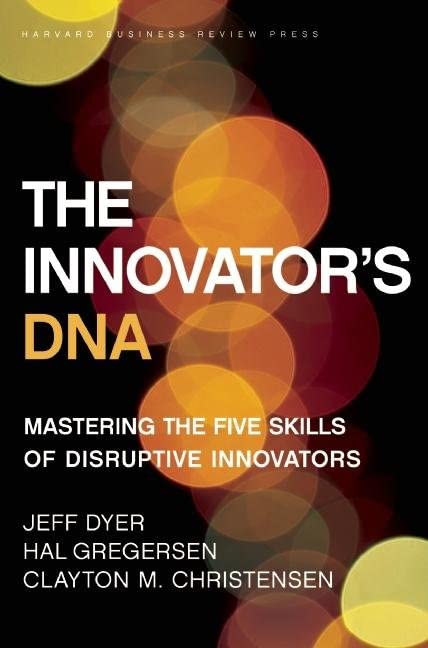The Innovator’s DNA by Jeff Dyer is a helpful, thought-provoking resource crucial for individuals and groups looking to improve their capacity for innovation. The authors of this book build on what is known about disruptive innovation to demonstrate how people can acquire the abilities required to go gradually from an idea to an impact.
The Harvard professors who wrote this fascinating book conducted a comprehensive national survey of innovative companies and their executives. There are many fascinating and motivating role models, such as Steve Jobs and Jeff Bezos. Although this book has a lot of excitement and looks like a self-help book, it has a solid academic foundation. The book was excellent, and it was motivational.
The writers provide several actions that increase one’s propensity to innovate, along with numerous examples and comments that show how these actions play out in practice. In retrospect, many of their observations appear logical and obvious, but it’s still intriguing to see them all put together.
No, wait! Wait to leave. What you just read is just a glimpse of what will come ahead. Keep on scrolling to learn more about this fascinating book.
The Innovator’s DNA by Jeff Dyer| Book Review
The Author(s)

Jeff Dyer
Professor of Strategy Horace Beesley is Jeff Dyer (PhD., UCLA). Among those who got their PhDs after 1991, he was recently ranked first on a list of the most influential management scholars in the world (based on citations and Google searches).
His “Relational View” article in the Academy of Management Review was the second most quoted business piece from 1998 to 2008. He was listed as the fourth most cited management scholar from 1996 to 2006. Jeff is the only strategy expert with at least five publications in Strategic Management Journal and Harvard Business Review.
His Harvard Press book, The Innovator’s DNA, is a business bestseller translated into 12 different languages. His study has also been highlighted in magazines including Forbes, the Economist, Fortune, BusinessWeek, and the Wall Street Journal.
Hal B. Gregersen

Hal Gregersen is a senior lecturer in leadership and innovation at MIT’s Sloan School of Management, a fellow at Innosight, and a co-founder of Innovator’s DNA consulting firm. He was also the previous executive director of the MIT Leadership Center.
Hal Gregersen has collaborated with well-known companies, including Chanel, Disney, Patagonia, UNICEF, and the World Economic Forum as an inspirational speaker. He was named one of the world’s most creative brains by Thinkers50.
His most recent bestsellers, “Questions Are the Answer: A Breakthrough Approach to Your Most Vexing Problems at Work and in Life” and “The Innovator’s DNA: Mastering the Five Skills of Disruptive Innovators,” are among the ten books he has written or co-written that have been translated into fifteen different languages (with Clayton Christensen and Jeff Dyer).
Suzi Lee, his wife, and Hal lived in England, France, and the United Arab Emirates before settling on Boston’s North Shore, where he indulges his lifelong passion for photography, and she works as a sculptor.
Clayton M. Christensen

The theory of “disruptive innovation,” dubbed the most important business concept of the early 21st century, was created by American professor and business consultant Clayton Magleby Christensen (April 6, 1952 — January 23, 2020). Christensen coined the term “disruption” in his 1997 book The Innovator’s Dilemma, which earned him the title of “the most important management thinker of his time”, according to The Economist.
He was a leader and author for the Church of Jesus Christ of Latter-day Saints and the Kim B. Clark Professor of Business Administration at Harvard Business School (HBS) (LDS Church). Additionally, Christensen co-founded the venture capital firm Rose Park Advisors and the management consulting and investment company Innosight, which focuses on innovation.
Book Overview| The Innovator’s DNA by Jeff Dyer

Full Title: The Innovator’s DNA: Mastering the Five Skills of Disruptive Innovators
Author: Clayton Christensen, Hal B. Gregersen, and Jeff Dyer
Genre: Self-help Book
Publishing Date: July 19 2011
Page Count: 303
Themes: Business, Entrepreneurship, Leadership, Management, Technology
Description:
The authors present five discovery skills that set innovative entrepreneurs and executives apart from conventional managers: associating, questioning, observing, networking, and experimenting.
These behaviors were observed in the world’s best innovators, including those at Apple, Google, Skype, and Virgin Group. The writers describe how to develop ideas, work with others to put them into practice and develop innovation abilities throughout the business to give it a competitive edge once you have mastered these competencies.
This innovation edge will convert into an increase in your company’s stock price or an “innovation premium,” which is only feasible by incorporating the innovation “code” directly into your people, processes, and overarching organizational philosophy.
Book Summary| The Innovator’s DNA by Jeff Dyer
Right, some folks are just born inventors. They stumble across concepts for brand-new goods, services, and businesses with little apparent effort. Innovators are made, not born. However, according to Clay Christensen, Hal Gregersen, and Jeffrey Dyer, everyone can become more inventive. How? Learn the discovery skills that distinguish exceptional leaders and entrepreneurs from conventional managers. The authors of The Innovator’s DNA note five qualities that the top inventors exhibit:
- (1) Associating: making connections between questions, issues, or concepts from unrelated fields;
- (2) Questioning: posing inquiries that contradict conventional wisdom;
- (3) Observing: examining the actions of clients, suppliers, and rivals to find novel approaches;
- (4) Experimenting: creating interactive experiences and eliciting unconventional responses to see what insights emerge; and
- (5) Networking: interacting with people who have different viewpoints.
The authors detail how to use these abilities to produce ideas, engage with ” delivery-driven ” colleagues to put ideas into practice and instil innovation skills across your firm to strengthen its competitive edge. They also offer a self-evaluation tool for evaluating your innovator’s DNA.
My Takeaway From the Book | The Innovator’s DNA by Jeff Dyer
There were quite some points that I could learn from this book. All innovators’ five traits are discussed in this book: associating, questioning, observing, networking, and experimenting. In an age when countless books on change, leadership, and innovation overwhelm the already-overwhelmed executive, the book is especially important because it includes real-world examples and practical exercises for each discovery skill.
There are four talents to hone, which lead to the skill of associating or tying together disparate topics and concepts. This is because intersections and boundaries are frequently where the most intriguing combinations are found. He lists out businesses that have this same DNA structure and can innovate in the marketplace after the first section of the individual skills earned by innovators.
What Did I Think of the Book?
The book has a good layout and offers insightful advice on being innovative personally and professionally. Those interested in learning innovative strategies and mindsets should read this book for personal and organizational development. With numerous examples and self-evaluation tables, the content is both enjoyable and educational to read.
The writers provide several actions that increase one’s propensity to innovate, along with numerous examples and comments that show how these actions play out in practice. In retrospect, many of their observations appear logical and obvious, but it’s still intriguing to see them all put together. The book should have been substantially condensed, and some portions were repetitive, but there are still a lot of insightful ideas that will be helpful going forward.
Ratings
This book holds a rating of 4 out of 5 stars.
Conclusion| The Innovator’s DNA by Jeff Dyer
The writers offer a readable book and specific tasks for fostering creative thinking. This book is a must-read for anyone looking to bolster their toolbox of problem-solving and decision-making abilities with unique, inventive traits. It was helpful to me and will continue to be so.
This book is a classic frequently cited by authorities and the media as a must-read for everyone interested in innovation.

Also, do check out some more Article Mentioned below:




